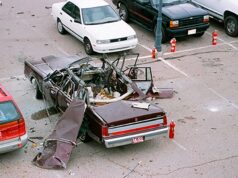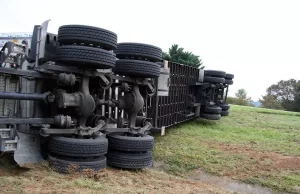Many US states have shaky laws regarding motorcyclists, and it has made many people wonder, where is lane splitting legal?
Bikes, scooters, and vehicles of the like are growing in popularity, so there is a more urgent need to clear up any confusion about their laws.
Breaking such laws can result in accidents, fines, and even jail time, depending on the specifics. Every road user should understand the rules and stay within them for safety. With that being said, here is a complete guide on everything you should know about lane splitting;
Where Is Lane Splitting Legal?
California is the only State in the US where lane splitting is legal, and you will get a fine for it in any other state.
In California, you can only go 10 miles an hour over the speed of the other vehicles. The law is unclear in other States since they allow similar activities such as filtering, which is moving between cars when they have stopped.
What Is Lane Splitting?
Lane splitting is a common term in the biker community, and most people who own a bike have done it at some point in their lives.
It generally refers to when motorcyclists ride between the lanes of traffic that are moving in the same direction as them.
Bikes are smaller than cars, and lanes are designed to leave some room between vehicles, even if they go in the same direction. This space is adequate for a bike to comfortably fit through so most bikers use it.
Lane splitting is used when a biker moves through traffic and the traffic is also moving. Filtering is the alternate term for when traffic stops, but a motorcyclist keeps moving through the spaces.
This happens when traffic is at a red light or stop sign and a biker is way behind, so they move up closer to the stop.
Most riders switch between splitting and filtering depending on the road conditions, so most law enforcement will regard it as the same.
Splitting needs a lot of experience and awareness since you aren’t in any specific lane and are, to some extent, at the mercy of car drivers. You should see them and anticipate where they are going to make sure you don’t get hit.
Sometimes lane splitting is the safer choice for motorists depending on which car you are in front or behind, especially at stops. If you split the lanes, you aren’t at risk of getting hit unless there is a turn.
The more common choice among motorcyclists is lane sharing, which involves two or more bikers riding in the same lane. Its benefits aren’t entirely clear, but it contributes to rider safety and prevents them from getting hit at stops.
Lone sharing with vehicles is a bad idea for motorcycles since the space is allocated for a car, and it allows for room for error.
If a motorcyclist goes into another car’s lane, they put the driver in a tight space, and a minor turn could lead to a collision.
With lane splitting, the bike is not on either vehicle’s lanes; it threads in a buffer zone for both. This allows both vehicles enough breathing room and gives all road users adequate reaction time and space to prevent collisions.
The laws around lane splitting are spotty and vary between States, so many motorcyclists take advantage of it.
Some drivers don’t appreciate this, leading to numerous confrontations that have made it a significant concern for many Police departments.
What Are The Reasons Of Lane Splitting?
There are many reasons for lane splitting, which is why it has grown so popular recently. A recent study suggested that lane splitting gives motorcyclists an escape route in congested traffic, thereby keeping them safer.
Many accidents involving motorcyclists happen because drivers don’t see them in slow or standstill traffic.
This is why it is an intelligent idea for bikes to keep moving in slow traffic, and that is a big reason for lane splitting since safety is the top priority.
People are also more visible when they are moving past traffic rather than when they are behind it. Other than safety, people who speak for lane splitting suggest that traffic moves faster because of it.
With lane splitting, the bikes don’t take any space on the lanes, so trucks and other cars can use the space, and traffic will move faster.
Larger vehicles can stay in the lanes while bikes weave forward to fill spaces, making the road safer and more efficient.
Since bikes are more complex, it is also challenging for motorcyclists to keep up with stop-and-go traffic. They must shift in and out of gear, maintain balance while moving slowly, and constantly put their foot down to remain upright.
This is difficult, especially since the bike is heavy when it isn’t moving, making a cyclist likely to hit another car. To reduce this risk, most believe it is better for the bike to lane split and go to the front for one stop in a safe spot.
Another prominent perk of lane splitting is that it saves time for the rider. Vehicles could be in a traffic jam, but the space between the lanes allows numerous motorcyclists to ride through and reach their destinations on time.
This is also more fuel efficient, so it greatly benefits the environment. So, the gas mileage, convenience, and agility offered by lane splitting make it an easy choice for most people.
Another environmental benefit of lane splitting is reducing vehicles’ time in traffic jams. Most people leave their engines running even in standstill traffic, increasing C02 emissions.
Research has proven that bikes that split lanes reduce traffic jam times, which in turn reduces air pollution. It has many risks, but lane splitting has many benefits.
The Potential Dangers Of Lane Splitting
There are numerous benefits to lane splitting, but it does not come without a few risks to all road users. Some believe the risks outweigh the rewards, so they have made it illegal in a few States. So, what are the potential risks of lane splitting?
The first risk of lane splitting comes up when you do it in stop-and-go, slow, or standstill traffic. Some pedestrians often cross between cars at such times, especially in cities or populated areas with connecting roads.
It will be hard for motorcyclists to see pedestrians since the vehicles will conceal them until it’s too late and they get into an accident. It is best to take precautions, especially with buses and trucks, or move slowly enough to avoid surprises.
Another significant risk when traffic is at a complete stop is that drivers might get out of their cars. In such cases, it is easy for a motorcyclist to drive into a car door if it is opened suddenly and there isn’t any way to warn them.
Here, it depends on the driver looking back before opening their door. In lane splitting, a motorcyclist might stop outside a car door, and the driver cannot leave the vehicle.
Situations like this could lead to road rage confrontations that could quickly turn violent, so it’s best to mind the gaps when lane splitting.
Consider the size of the lanes and possible escape routes in case you need to make room for other users.
Police officers might not be the biggest fans of lane splitting, depending on where and how you do it. Some states don’t allow lane splitting, so you should review the traffic laws in that jurisdiction before trying anything.
Since the cars might make sudden turns, you should be wary of lane splitting around intersections or exits.
This makes it even more important to have an escape route so that if another motorist swerves, you have room to avoid a collision.
There is always the minor risk of collisions and scratches with cars, especially with an inexperienced bike rider.
Ensure you have full handling capability at a slow speed and can support your bike’s weight before you try lane splitting.
You have to remember that as a motorcyclist, you are exposed, and you will be more severely injured than a driver. Even in full gear, getting hit by a car will do a lot of damage to you and your bike.
As such, you are responsible for taking every step necessary to keep yourself and other users safe while on the road.
Don’t make any unnecessary lane splits, and if the road conditions are bad, it is best to avoid it altogether, as cars are more likely to swerve.
Conclusion
You can now definitively answer the question, “Where is lane splitting legal?” and you will have an easier time staying out of trouble with the police.
Lane splitting is a popular routine among motorcyclists, and it has a lot of benefits for riders, other road users, and the environment.
Despite all its advantages, some people still have legitimate concerns about it and suggest it’s more harmful than helpful. It might cause accidents with inexperienced road users, which will cause more traffic congestion, defeating the purpose of doing it.














